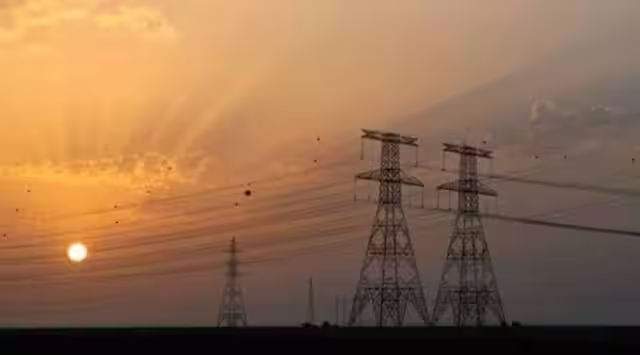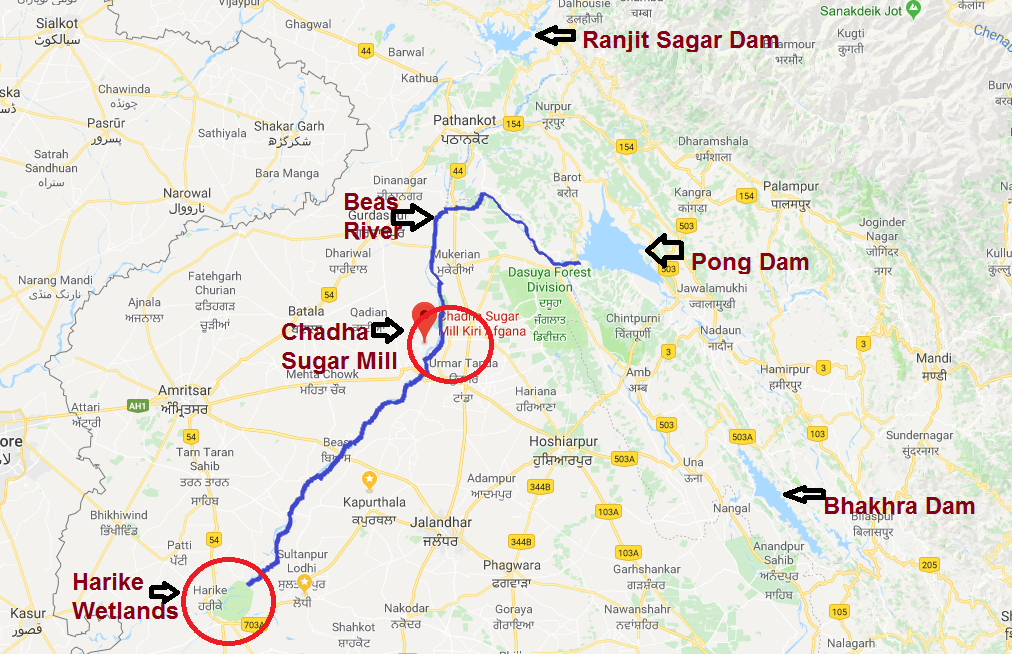Description

Disclaimer: Copyright infringement not intended.
Context
Power generation achievements and water levels in various dams in northern India.
Details
- The Punjab State Power Corporation Limited (PSPCL) achieves a new record of 153.97 lakh units in single-day power generation from all four units of the Ranjit Sagar Dam (RSD) project.
- The RSD units have been operating round the clock for the last 10 days, generating high power outputs.
- PSPCL is running all four units at 160 MW each, utilizing a 10 per cent cushion over the declared value of 150 MW.
Water Levels and Inflow in Ranjit Sagar Dam
- The water level in RSD is recorded at 524.64 meters, showing an increase of 11.5 meters in the last 10 days.
- On Wednesday, the inflow in the reservoir was 27,122 cusecs, and discharge through the turbine was 21,083 cusecs.
- Ravi river's discharge through a one-meter opening of one floodgate is 6,000 cusecs.
Water Levels in Bhakra Reservoir on Sutlej River
- Bhakra reservoir's water level is at 1,647 feet, compared to last year's level of 1,583 feet on the corresponding day.
- The dam's level has increased by around 44 feet between July 8 and July 11.
- The inflow in Bhakra reservoir is 60,500 cusecs.

Water Levels in Pong Reservoir on Beas River
- Pong reservoir's water level is at 1,373.5 feet, an increase of 36 feet in the past two weeks due to heavy rainfall in the region.
- The inflow in the Pong reservoir is 55,300 cusecs.
- Dam authorities have started releasing water downstream through turbines and spillways to maintain sufficient space in the reservoir for the remaining monsoon season.
Implications and Measures
- The record power generation from RSD is a positive development for meeting energy demands in the region.
- Increasing water levels in the dams signify sufficient water reserves for irrigation, power generation, and other purposes.
- The controlled release of water from Pong reservoir is aimed at managing the water levels for future rainfall and preventing flooding.
About Ranjit Sagar Dam

Disclaimer: Copyright infringement not intended.
- The Ranjit Sagar Dam (RSD), also known as the Thein Dam, is a major hydroelectric and irrigation project located on the Ravi River in the state of Punjab, India.
- It is named after Maharaja Ranjit Singh, the founder of the Sikh Empire.
Construction and Capacity
- The dam was constructed in the early 2000s and was completed in 2000.
- The dam has a storage capacity of approximately 1.25 billion cubic meters of water.
Hydroelectric Power Generation
- One of the primary objectives of RSD is to generate hydroelectric power to meet the energy needs of Punjab and neighboring states.
- The dam has four hydroelectric power generating units, each with a capacity of 150 MW, bringing the total installed capacity to 600 MW.
Irrigation and Water Supply
- The dam provides irrigation water to thousands of hectares of agricultural land in Punjab, enhancing agricultural productivity in the region.
- The stored water is also utilized for domestic and industrial water supply.
Record Power Generation
- The Punjab State Power Corporation Limited (PSPCL) has recently achieved a significant milestone at RSD by recording a new high of 153.97 lakh units of power generation in a single day.
- The PSPCL has been operating all four units of the dam round the clock for a period of 10 days, contributing to the achievement of the record power generation.
Increased Power Output
- The PSPCL is running all four units at 160 MW each, exceeding the declared value of 150 MW, utilizing a 10 per cent cushion over the design limits.
- The sustained operation at higher capacity has resulted in an all-time high power generation on any single day at the RSD project.
Impact on Energy Security
- The record power generation from RSD is instrumental in meeting the energy demands of Punjab and neighboring regions, ensuring energy security and reducing dependence on fossil fuels.
Managing Water Levels and Inflow
- The water level in RSD is closely monitored and managed to ensure adequate storage and controlled release for power generation, irrigation, and water supply.
- The passage also provides information about the inflow into the reservoir and the discharge through turbines and spillways.
Sustainable Water Resource Management
- Effective water resource management is crucial to ensure the sustainability of the dam and its contributions to power generation, irrigation, and water supply.
- Controlled releases are made from the reservoir to create space for potential future rainfall, preventing overflooding and optimizing water utilization.
About River Sutlej
- The Sutlej River, also spelled as Satluj, originates from the Rakshastal (one of the Mansarovar Lakes) in Tibet.
- It flows through Tibet, Himachal Pradesh, and Punjab before entering
Length and Importance
- The Sutlej River has a total length of approximately 1,550 kilometers.
- The river is a lifeline for the people living along its banks and supports agriculture and other economic activities in the region.
Hydropower Generation
- One of the significant projects on the Sutlej River is the Bhakra Dam, one of the highest gravity dams in the world.
- The Bhakra Dam and other hydropower projects on the river generate electricity, contributing to the energy needs of northern India.
International Significance
- The Sutlej River is one of the five rivers that form the Indus River System.
- The river's flow is regulated under the Indus Water Treaty, an agreement between India and Pakistan.

About River Beas
- The Beas River originates from the Beas Kund, located in the Himalayas.
- It flows through Himachal Pradesh and Punjab before entering Pakistan.
Length and Geography
- The Beas River has a total length of around 470 kilometers.
- It passes through steep gorges and scenic valleys in the Himalayan region before entering the plains of Punjab.
Irrigation and Hydropower
- The Beas River is extensively used for irrigation purposes, supporting agricultural activities in the regions it traverses.
- The Pong Dam, also known as Maharana Pratap Sagar, is constructed on the Beas River. It is the highest earthfill dam in India and serves for irrigation, drinking water supply, and power generation.
Contribution to the Ganges
- The Beas River is one of the significant tributaries of the Ganges River.
- It joins the Sutlej and the Yamuna rivers to form the Triveni Sangam at Allahabad, Uttar Pradesh.
|
PRACTICE QUESTION
Q) Consider the following statements:
- Sutlej River originates in the catchment area of Rakshastal in Tibet
- The Beas River flows through the states of Himachal Pradesh and Punjab.
Select the correct statements using the code below:
(a) 1 only
(b) 2 only
(c) Both 1 and 2
(d) Neither 1 nor 2
Answer: C
|
https://indianexpress.com/article/cities/chandigarh/in-single-day-record-ranjit-sagar-dam-generates-153-97-lakh-units-8851883/












